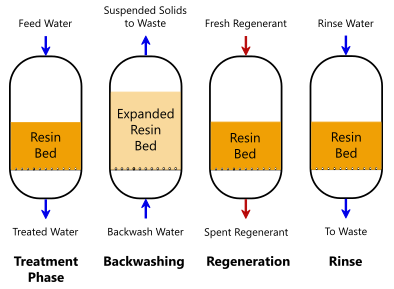M270 PFAS Treatment for Municipal Water Systems
Advanced Approaches for Effective PFAS Contamination Removal
The relentless difficulty of PFAS contamination demands the expedition of innovative removal approaches that can properly resolve these dangerous materials. Ingenious technologies, such as innovative oxidation procedures and various adsorption techniques, have arised as promising solutions in mitigating PFAS from affected environments.
Recognizing PFAS Properties
Although per- and polyfluoroalkyl compounds (PFAS) have been commonly utilized in numerous industrial and consumer products as a result of their distinct residential properties, their determination in the atmosphere presents considerable challenges to public health and safety. PFAS are a team of artificial chemicals defined by a carbon-fluorine bond, among the toughest chemical bonds known, which adds to their exceptional stability and resistance to deterioration. This security allows PFAS to gather in the atmosphere and living organisms, causing prospective adverse health and wellness results.
These same residential or commercial properties contribute to their ecological persistence, as PFAS do not easily damage down with all-natural procedures. Recognizing the chemical residential properties of PFAS is vital for establishing efficient strategies to manage and reduce their environmental impact.
Ingenious Removal Technologies
The perseverance of PFAS in the environment has actually spurred the growth of ingenious removal innovations targeted at successfully eliminating these contaminants from impacted ecosystems. Among the most promising methods are innovative oxidation procedures (AOPs), which use powerful oxidants to damage down PFAS compounds right into much less dangerous compounds. AOPs can be customized to target details PFAS structures, enhancing their efficacy.
Another arising technology is making use of adsorption media, such as activated carbon and ion exchange resins, which can uniquely capture PFAS from polluted water. These materials have actually shown significant elimination performances, although routine substitute and regeneration are necessary to maintain performance.
Membrane layer purification strategies, consisting of reverse osmosis and nanofiltration, are likewise acquiring traction in PFAS remediation. These techniques can properly separate PFAS from water, providing a viable service for treating polluted sources. Furthermore, thermal therapy techniques, such as incineration, can disintegrate PFAS right into non-toxic results, though they need cautious monitoring to regulate exhausts.
Jointly, these innovative remediation innovations stand for significant advancements in the ongoing battle versus PFAS contamination, using various strategies to restore damaged settings and shield public wellness.

Bioremediation Strategies
Bioremediation techniques supply an appealing method to addressing PFAS contamination by taking advantage of the all-natural abilities of bacteria to degrade these relentless compounds (m270 waste management). This approach includes using bacteria, fungis, and other microorganisms that can metabolize or transform PFAS materials into much less dangerous byproducts
Recent improvements in molecular biology and environmental microbiology have actually boosted our understanding of microbial communities and their prospective get redirected here roles in PFAS deterioration. Scientists are proactively discovering details pressures of bacteria, such as Pseudomonas and Bacillus, which have actually shown the capacity to break down particular PFAS substances.
Sitting bioremediation strategies, where microorganisms are promoted directly in polluted settings, can be particularly efficient. This method typically includes the application of nutrients or electron donors to promote microbial growth and activity. Additionally, ex-spouse situ methods, such as bioreactors, enable controlled conditions that can optimize destruction prices.
Regardless of the promise of bioremediation, difficulties remain, consisting of the complex nature of PFAS substances and the requirement for read what he said considerable area testing - m270 waste management. Proceeded research study and development will certainly be essential to refine these techniques and analyze their effectiveness in diverse environmental contexts
Adsorption and Filtering Techniques
Addressing PFAS contamination commonly includes employing adsorption and filtration methods, which are designed to remove these relentless chemicals from water and soil. Amongst the different strategies, triggered carbon adsorption is commonly used because of its high area and porosity, allowing efficient trapping of PFAS molecules. Granular activated carbon (GAC) systems are particularly preferred for dealing with big quantities of polluted water, while powdered triggered carbon (PAC) can be used for smaller-scale applications.
Ion exchange resins also show assurance in PFAS elimination, working by exchanging PFAS ions with much less unsafe ions in the water. This technique has shown performance in concentrating PFAS compounds, promoting their subsequent elimination. Furthermore, membrane purification methods, such as reverse osmosis and nanofiltration, run by utilizing semi-permeable Check This Out membrane layers to different PFAS from water, efficiently decreasing their focus.
While these techniques work, they have to be meticulously chosen based on the certain PFAS compounds existing and the environmental context. Constant developments in products science and engineering are causing the development of unique adsorbents and filtration systems that improve elimination effectiveness and lower operational prices, consequently enhancing general remediation initiatives.
Regulatory and Plan Considerations
Just how can effective regulatory frameworks boost the monitoring of PFAS contamination? Extensive plans are important to make certain a coordinated and robust feedback to the difficulties presented by per- and polyfluoroalkyl substances (PFAS) Regulations can establish clear standards for surveillance, reporting, and remediating PFAS-contaminated sites, promoting responsibility among markets and public entities. (m270 waste management)

In addition, monetary motivations and gives can be integrated into plans to encourage the adoption of sophisticated removal technologies. Policymakers must additionally prioritize r & d, guaranteeing that arising approaches for PFAS removal are verified and applied properly.
Furthermore, public understanding and involvement are critical components of any regulative method, encouraging areas to support for their health and security. Eventually, a well-structured regulative setting will certainly not just boost the management of PFAS contamination however also advertise lasting practices that safeguard future generations.
Final Thought
In recap, the complexity of PFAS contamination demands the fostering of innovative removal methods. Innovative innovations such as sophisticated oxidation procedures, adsorption strategies, and membrane layer filtration have demonstrated considerable efficacy in getting rid of these consistent compounds from infected water sources. Furthermore, regulatory frameworks should develop to support the execution of these modern technologies, making certain risk-free and efficient management of PFAS toxins. Proceeded r & d in this area remain crucial to addressing the obstacles presented by PFAS contamination.